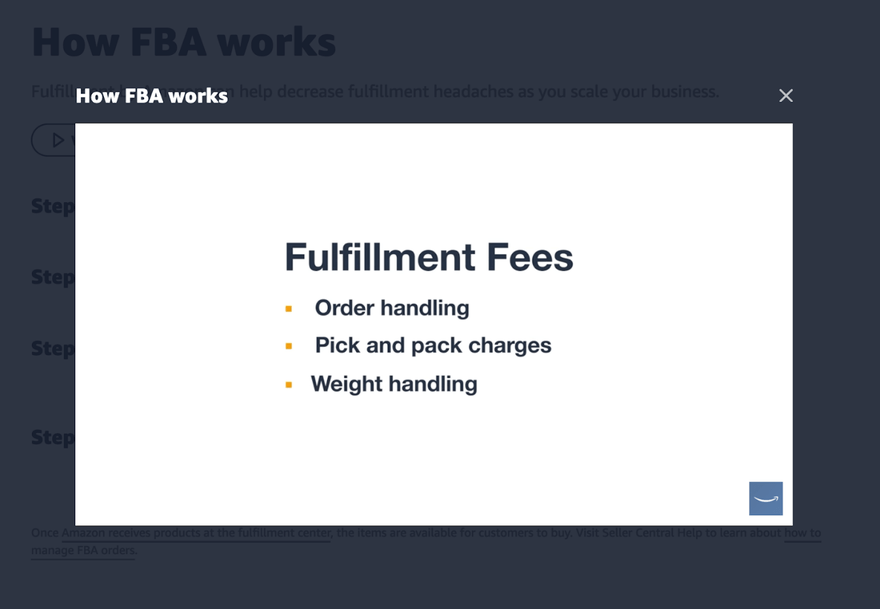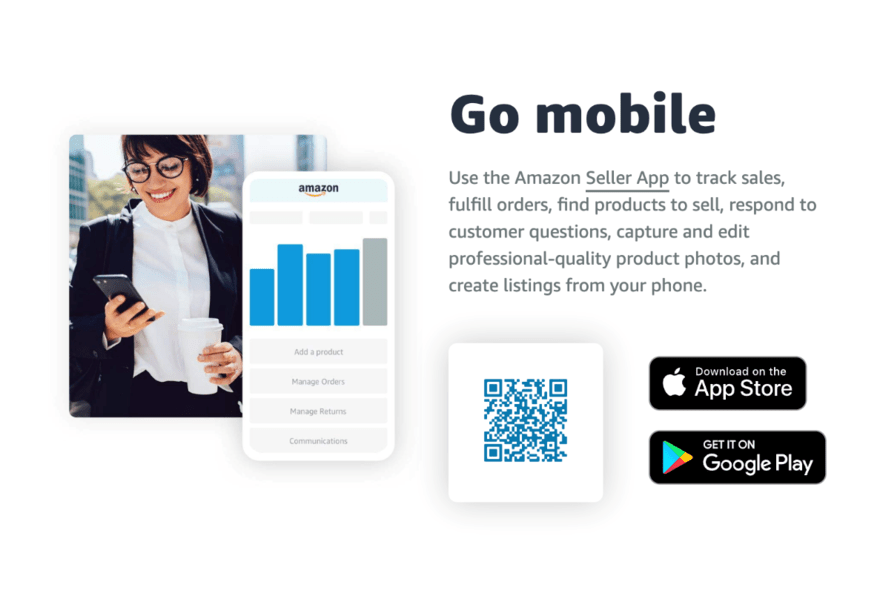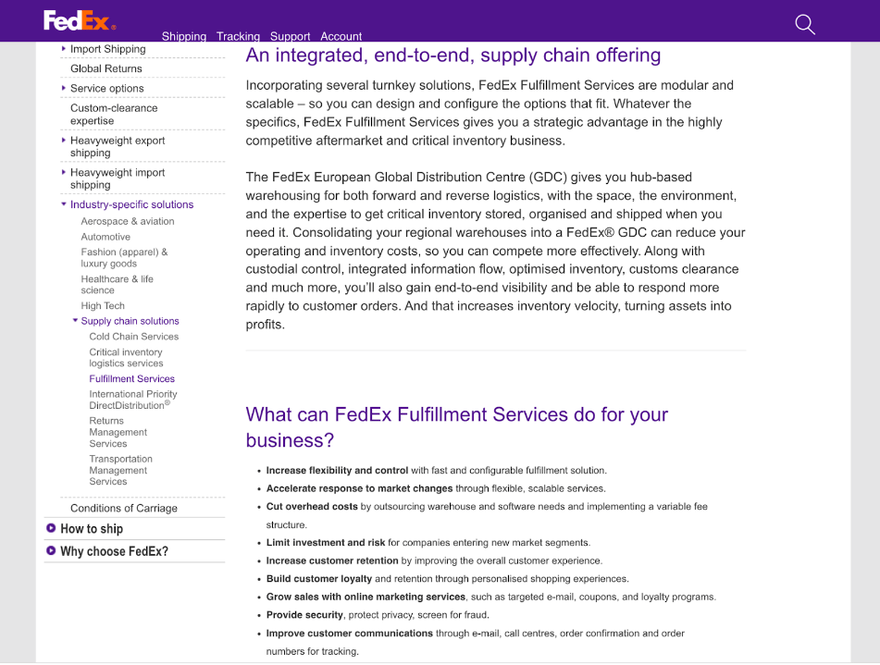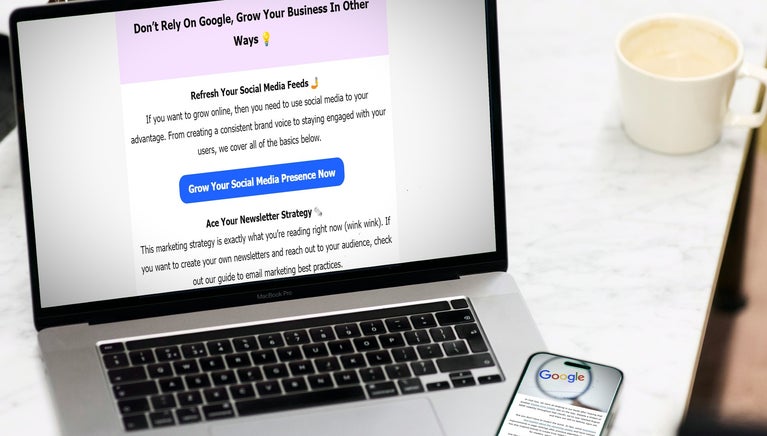What Is an Amazon FBA Business? A Beginner’s Guide
If you click to purchase a product or service based on our independent recommendations and impartial reviews, we may receive a commission. Learn more
Sometimes it’s wonderful when other people do stuff for us. Like when they make us dinner. Or run to the post office. Or buy a fantastic gift for a loved one and put our names on it.
The same can apply to fulfillment of our online store’s goods.
If you are the type of online business owner who is either extremely busy, or hates any extra hassle (or both!) then Amazon FBA might be exactly what you’re looking for.
But what is an Amazon FBA business? Is it the same as starting a dropshipping business? And how do you know if it’s the right choice for you? To help you out, we’re here to give you a guide and talk you through the steps, the pros and cons, and the competition. Let’s roll!
What Is Amazon FBA Business?
So, what is an FBA business? An Amazon FBA business is the ultimate dropshipping model.
FBA stands for Fulfillment by Amazon, so an Amazon FBA business is an online business that uses Amazon to store, sort, and dispatch your goods to your customers. It also provides the customer service that comes with the territory.
Getting Set Up With Amazon FBA
It’s fairly easy to sign up to Amazon FBA. Once you familiarize yourself with how to sell on Amazon, you’re ready to get started. Here are the steps:
1. Register and Pick Your Plan
You’ll need to register your business and provide all the legal, financial, and practical details necessary to run your online business. This includes your bank account info, a credit card, ID, tax info, and a business phone number.
Then you will need to pick which subscription plan works for you. (See below for the cost breakdown). You don’t have to feel anxiety to pick the wrong one – you can always switch back and forth.

2. Amazon Provides You with Your Seller Central Hub
This will help you keep track of everything – your sales, engagement, inventory, etc. Take your time and have a look around! There’s a lot of information there and you don’t want to miss out on anything that will make your life easier.
Advice from the Experts
Top Tip: Take advantage of the Amazon seller app so that you have your business on your phone on the go!
3. Check Out Your Competition, Both On and Off Amazon
This is a key step that some new online business owners skip at their peril. You need to see what competitor hubs look like, how much your competitors sell their comparable goods for, and which dispatch services and discounts they offer. That’s where market research comes in!
Online customers have no problem taking an extra two to three minutes to see if they could save money with someone else. We do it with our purchases all the time! So you have to make it worth their while. What can you offer that competitors aren’t? How can you improve the customer experience?
Advice from the Experts
Top Tip: A free gift can win you customers. Why not read up on packaging inserts – adding extras such as freebies, discounts, or even thank you cards are a great way to nurture a relationship with your customers.
4. Get the Product Information
You’ll need information and details about the products for your listing including SKU numbers and descriptions. Amazon provides detailed information and if you aren’t sure about what to include Amazon has a video to help.
5. Create Your Product Listings
If you want to edge out your competition, don’t forget to first focus on what your customers will feel if they get your product. It’s the emotional side of things that persuades a customer to buy. Then include the logical and practical stuff.
Have a think about how your customer’s life would actually improve if they bought it (honesty is important!). Will they have more fun? Will they delight a friend? Will they have fewer headaches? Will their day-to-day life be more organized?
It’s all about improving their lives. You just have to know the language to do that.
6. Make a Million Jillion Dollars!
Our favorite step. Bear in mind, it might take some time.
In all seriousness though, it does take patience and dedication to build up a customer base, grow sales, and beat the competition. Keep monitoring, testing, iterating, and improving, and you’ll get there! It also helps to understand your Amazon conversion rate, how to calculate it, and the factors that influence it!

Amazon FBA: Pros and Cons
As with any service, there are pros and cons to using Amazon FBA.
Pros
Increased Visibility: Your products are eligible for Prime two-day shipping (yay, customers love that!) and will have the Prime logo on the product detail page. Not only do you know your products will ship according to ecommerce shipping best practices, but the Prime logo can increase visibility and sales.
Increased Convenience: Amazon handles pretty much everything, so you’ve got more time to grow your business.
Amazon’s Logistics Network: Amazon’s huge network makes everything easy and efficient.
Improved Product Listing: Your products will have priority in search results because they are stored in Amazon’s fulfillment centers.
Cons
Limited Control Over Shipping and Handling: Amazon controls the speed and quality of the service.
Potential for Stockouts: Increased visibility means your product could get popular, fast. This means a risk of running out of stock, which can harm your reputation and lead to lost sales.
Dependence on Amazon: You can become dependent on the platform, which limits your flexibility and increases your risk if Amazon changes its policies or fees.
Yes, there are costs (see below) but it’s a model where you have to do very, very little heavy lifting – literally and metaphorically!
Amazon FBA: Costs
We like to give it to you straight, so we will say that Amazon FBA can be expensive. There are a lot of fees to consider.
Subscription Fee: $0.99 per item or $39.99 per month
This is the fee for operating as a business under the Amazon umbrella. If you choose the Individual plan, you’ll pay $0.99 for every item sold. If you choose the Professional plan, you’ll pay $39.99 per month.
Selling Fee
Like you see on eBay, fees depend on how much the items cost. There might be additional referral or closing fees, so check if your item categories include these.
Shipping Fee
This varies wildly, depending on the size and weight of your items as well as what type of shipping services and speeds you offer. The locations of where you are willing to dispatch your items too will also alter your shipping fees.
FBA Fees: $3.22 – $158
These are separate fees that Amazon puts on top for handling the end-to-end process for you. This will include the storage and customer service costs. Fulfillment fees depend on the size tier, dimensions, and weight of your products.
Storage Fees: $0.87 – $3.63 per cubic foot
You need to pay for the storage your inventory uses in Amazon’s fulfillment centers. This is charged as a monthly inventory storage fee – the cost depends on your product type, size-tier, and the time of year. For example, “dangerous goods” are more expensive to store, and all products become more expensive to store during peak times such as between October and December.
Amazon FBA Alternatives
Amazon FBA is not the only choice you have as an online business owner – many sellers seek out Amazon alternatives. You’ve got dozens of options, but here are three of the most popular both on and off the Amazon platform:
Amazon FBM
FBM does increase your profits and reduce your overheads because you get to take advantage of Amazon’s enormous freight and shipping discounts. But you’re going to need to put in more work. With FBM, you as the seller stores your products and ships them directly to the customer.
You will be responsible for all aspects of fulfillment, including storage, shipping, and customer service. FBA is ideal for those who want to focus on product sourcing and marketing, while FBM is better for those who want to retain control over their fulfillment process and keep costs low.
FedEx Fulfillment
FedEx is a multinational courier delivery services company that provides shipping, logistics, and supply chain management solutions to businesses and individuals. The company offers a range of services, including wide coverage of ground and air delivery, international shipping, printing, and office services. It has also integrated with ecommerce website builders and offers inventory management.
At first glance, it can be more cost-efficient than Amazon FBA. But bear in mind you will need to store your goods and package them – that could drive up your costs again.

ShipBob
Though both ShipBob and Amazon FBA are fulfillment models, there are some big differences. ShipBob integrates into a variety of ecommerce platforms. With ShipBob, the retailer retains ownership of their inventory, while with Amazon FBA, the retailer transfers ownership to Amazon.
ShipBob’s storage fees are cheaper than Amazon’s, especially during peak season. ShipBob partners with multiple carriers to offer shipping at competitive rates (so you’re not just stuck with one carrier option). ShipBob is more flexible on what type of products can be stored. It also provides dedicated customer service and account management.
Whichever platform you choose, it’s important to remember that with non-Amazon platforms there will be a steep learning curve when it comes to their systems and software.
Advice from the Experts
Top Tip: Always double-check that you aren’t bound to a certain period of time with a fulfillment platform unless you know for sure it works for you.
Is Amazon FBA For You?
Amazon FBA is an extremely convenient option for online business owners who want to sell products online but don’t have the space, resources, or expertise to handle storage and shipping.
Whether you are simply extremely busy, or your online business is a side-hustle, or you quite frankly hate admin, FBA is a great option.
But you have to be aware it is expensive, so the time that you save should be worth what you have to pay out in all the fees associated with using the service, including storage fees, fulfillment fees, and shipping fees.
You also have to be very comfortable selling products on the Amazon platform because you’re tied into its marketplace by signing up to FBA.
Summary
It’s nice to have so many options for your shipping and fulfillment. As long as you are aware of the benefits and costs associated with each, you’ll be able to choose which one is best for you. We started out by asking “What is an Amazon FBA business?” and by now you should know the answer, and have an idea of whether it’s the right path for your business.
Sometimes it can feel a little intimidating to make such a big decision, but remember, nothing is set in stone. If you find out that the fulfillment service you chose isn’t right for you, you can always change.

Leave a comment